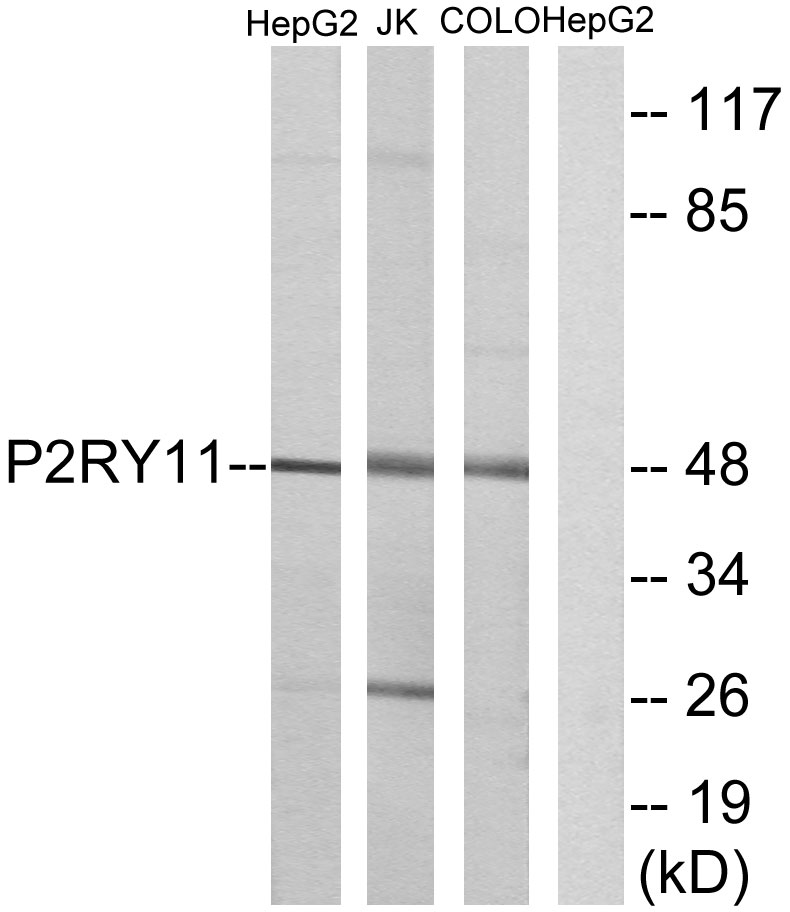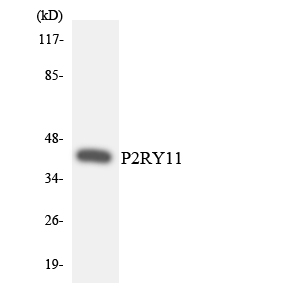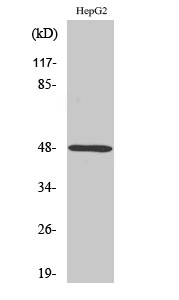产品名称
P2Y11 Rabbit Polyclonal Antibody
别名
P2RY11; P2Y purinoceptor 11; P2Y11
存储缓冲液
Liquid in PBS containing 50% glycerol, 0.5% BSA and 0.02% New type preservative N.
Human Gene Link
http://www.ncbi.nlm.nih.gov/sites/entrez?db=gene&term=5032
Human Swissprot No.
Q96G91
Human Swissprot Link
http://www.uniprot.org/uniprotkb/Q96G91/entry
免疫原
The antiserum was produced against synthesized peptide derived from human P2RY11. AA range:140-189
特异性
P2Y11 Polyclonal Antibody detects endogenous levels of P2Y11 protein.
稀释度
WB 1:500 - 1:2000. ELISA: 1:10000. Not yet tested in other applications.
宿主
Polyclonal, Rabbit,IgG
背景介绍
The product of this gene belongs to the family of G-protein coupled receptors. This family has several receptor subtypes with different pharmacological selectivity, which overlaps in some cases, for various adenosine and uridine nucleotides. This receptor is coupled to the stimulation of the phosphoinositide and adenylyl cyclase pathways and behaves as a selective purinoceptor. Naturally occuring read-through transcripts, resulting from intergenic splicing between this gene and an immediately upstream gene (PPAN, encoding peter pan homolog), have been found. The PPAN-P2RY11 read-through mRNA is ubiquitously expressed and encodes a fusion protein that shares identity with each individual gene product. [provided by RefSeq, Jul 2008],
组织表达
Highest expression in liver and spleen.
细胞定位
Cell membrane; Multi-pass membrane protein.
信号通路
Neuroactive ligand-receptor interaction;
功能
function:Receptor for ATP and ADP coupled to G-proteins that activate both phosphatidylinositol-calcium and adenylyl cyclase second messenger systems. Not activated by UTP or UDP.,induction:Increased by DMSO and retinoic acid.,miscellaneous:A putative trans-splicing which involves PPAN and P2RY11 gene regions produces a fusion protein.,similarity:Belongs to the G-protein coupled receptor 1 family.,tissue specificity:Highest expression in the spleen, lower in the small intestine.,
纯化
The antibody was affinity-purified from rabbit antiserum by affinity-chromatography using epitope-specific immunogen.



